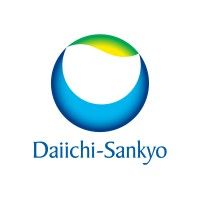预约演示
更新于:2025-07-17
Gadodiamide
钆双胺
更新于:2025-07-17
概要
基本信息
最高研发阶段批准上市 |
首次获批日期 美国 (1993-01-08), |
最高研发阶段(中国)批准上市 |
特殊审评- |
登录后查看时间轴
结构/序列
分子式C16H26GdN5O8 |
InChIKeyHZHFFEYYPYZMNU-UHFFFAOYSA-K |
CAS号131410-48-5 |
关联
9
项与 钆双胺 相关的临床试验CTRI/2023/05/053235
A single-arm, multicentre, Post-marketing observational follow up on patients who have been given Gadolinium for clinical scans to detect all prospective adverse events immediately post dose and 6 (±2) weeks after administration of Omniscan
开始日期2023-06-05 |
申办/合作机构 |
NCT04373564
Prospective Evaluation of Potential Effects of Repeated Gadolinium-based Contrast Agent (GBCA) Administrations of the Same GBCA on Motor and Cognitive Functions in Neurologically Normal Adults in Comparison to a Non-GBCA Exposed Control Group
This study is a postmarketing requirement jointly carried out by four NDA holders (Bayer AG, Bracco, GE Healthcare and Guerbet) and the CRO IQVIA.
The study aims to create detailed images of the organs and tissue of the human body during x-ray, CT-scan or MRI investigations, doctors are using contrast media (a kind of dye) which can be given to patients by injection into a blood vessel or by mouth.
In this study researchers want to find out whether so called gadolinium-based contrast agents (GBCAs) have an effect on body movement and mental skills when given to participants multiple times within 5 years.
The study plans to enroll about 2076 participants suffering from a condition for which they are likely to have at least annually a MRI or another imaging examinations. Only adults up to 65 years will be considered to join this study. During the study duration of 5 years participants will receive annually a MRI or other imaging tests (such as CT-scan, x-ray) and will visit the study doctor at least 7 times for physical examinations, laboratory investigations and tests on body movement and mental skills.
The study aims to create detailed images of the organs and tissue of the human body during x-ray, CT-scan or MRI investigations, doctors are using contrast media (a kind of dye) which can be given to patients by injection into a blood vessel or by mouth.
In this study researchers want to find out whether so called gadolinium-based contrast agents (GBCAs) have an effect on body movement and mental skills when given to participants multiple times within 5 years.
The study plans to enroll about 2076 participants suffering from a condition for which they are likely to have at least annually a MRI or another imaging examinations. Only adults up to 65 years will be considered to join this study. During the study duration of 5 years participants will receive annually a MRI or other imaging tests (such as CT-scan, x-ray) and will visit the study doctor at least 7 times for physical examinations, laboratory investigations and tests on body movement and mental skills.
开始日期2021-03-24 |
申办/合作机构 Guerbet LLC [+3] |
NCT02501759
Pilot Study of Transrectal Multiparametric MRI-Guided Biopsy: Role in Prostate Cancer Evaluation
This pilot clinical trial studies transrectal magnetic resonance imaging (MRI)-guided biopsy to see how well it works in identifying cancer in patients with suspected prostate cancer who are scheduled to undergo standard biopsy. Transrectal MRI-guided biopsy uses a thin needle inserted through the rectum into the prostate and takes a sample of tissue, guided by MRI. MRI uses magnets to take pictures of the prostate and may be able to identify cancer. Transrectal MRI-guided biopsy may be more accurate and cause patients less pain than standard ultrasound-guided biopsy. It is not yet known whether transrectal MRI-guided biopsy is more effective than ultrasound-guided biopsy in identifying prostate cancer.
开始日期2015-05-01 |
申办/合作机构 |
100 项与 钆双胺 相关的临床结果
登录后查看更多信息
100 项与 钆双胺 相关的转化医学
登录后查看更多信息
100 项与 钆双胺 相关的专利(医药)
登录后查看更多信息
1,000
项与 钆双胺 相关的文献(医药)2025-06-10·JOURNAL OF VETERINARY MEDICAL SCIENCE
Pilot study on indirect magnetic resonance lymphography using gadoxetate disodium in dogs.
Article
作者: Yamada, Kazutaka ; Kanai, Eiichi ; Yoshikawa, Kouki ; Yoshinari, Motohiro
The contrast enhancement between gadoxetate disodium (Gd-EOB-DTPA) and gadodiamide hydrate (Gd-DTPA-BMA) in indirect magnetic resonance lymphography was compared among six healthy beagles. Contrast mediums (0.5 mmol) were injected subcutaneously into the lateral malleolus of the right fibula. Magnetic resonance imaging was performed at 5, 10, 15, 30, 45, and 60 min. The popliteal and medial iliac lymph nodes (LNs) were visualized. Gd-EOB-DTPA had a significantly superior contrast enhancement ratio than Gd-DTPA-BMA at 10 and 15 min at the popliteal LNs. Moreover, Gd-EOB-DTPA had a longer duration of contrast enhancement than Gd-DTPA-BMA in both the popliteal and medial iliac LNs. Gd-EOB-DTPA demonstrated stronger and longer-lasting lymph node enhancement than Gd-DTPA-BMA, thereby indicating its potential application in MR lymphography.
2025-06-01·MAGNETIC RESONANCE IMAGING
Precipitation of gadolinium from magnetic resonance imaging contrast agents may be the Brass tacks of toxicity
Article
作者: DeAguero, Joshua ; Watt, John ; Dokładny, Karol ; Escobar, G Patricia ; Henderson, Ian M ; Kirk, Martin L ; Benevidez, Angelica D ; Wagner, Brent ; Mowry, Curtis D ; Bachand, George D
The formation of gadolinium-rich nanoparticles in multiple tissues from intravenous magnetic resonance imaging contrast agents may be the initial step in rare earth metallosis. The mechanism of gadolinium-induced diseases is poorly understood, as is how these characteristic nanoparticles are formed. Gadolinium deposition has been observed with all magnetic resonance imaging contrast agent brands. Aside from endogenous metals and acidic conditions, little attention has been paid to the role of the biological milieu in the degradation of magnetic resonance imaging contrast agents into nanoparticles. Herein, we describe the decomposition of the commercial magnetic resonance imaging contrast agents Omniscan and Dotarem in the presence of oxalic acid, a well-known endogenous compound. Omniscan dechelated rapidly and preluded measurement by the means available, while Dotarem underwent a two-step decomposition process. The decomposition of both magnetic resonance imaging contrast agents by oxalic acid formed gadolinium oxalate (Gd2[C2O4]3, Gd2Ox3). Furthermore, both observed steps of the Dotarem reaction involved the associative addition of oxalic acid. Adding protein (bovine serum albumin) increased the rate of dechelation. Displacement reactions could occur at lysosomal pH. Through these studies, we have demonstrated that magnetic resonance imaging contrast agents can be dissociated by endogenous molecules, thus illustrating a metric by which gadolinium-based contrast agents (GBCAs) might be destabilized in vivo.
2025-05-30·Gels
Dosimetric Evaluation of the Sensitivity of PAGAT Gel Dosimeters Infused with Clinically Used Gadolinium-Based Contrast Agents.
Article
作者: Fuentealba, Melani ; Díez, Sergio ; Vallejos, Carolina ; Santibáñez, Mauricio
This study evaluates the impact of gadolinium-based contrast agents (Omniscan, Dotarem, and Gadovist) on the performance of PAGAT gel dosimeters using spectrophotometric analysis. Dosimeters were infused with gadolinium at concentrations ranging from 0 to 40 mg/mL and irradiated with a 6 MV photon beam over a dose range of 0-15 Gy. Regarding dosimeter behavior, Dotarem exhibited an enhancement in optical density prior to irradiation due to polymerization reactions between the dosimeter and the contrast agent starting at 10 mg/mL, which compromised optical readings above 20 mg/mL. Omniscan consistently showed 37.7% lower sensitivity than standard PAGAT across all concentrations and dose levels. Conversely, Gadovist enhanced sensitivity by up to 50% at 20 mg/mL, with additional gains at higher concentrations, although accompanied by saturation at lower dose levels. Radiological analysis showed that all tested concentrations maintained mass energy-absorption coefficient differences below 1% and water-equivalence in effective atomic number within 5% at 6 MV. These findings underscore the importance of selecting an appropriate contrast agent to enhance gel dosimeter sensitivity, particularly in low-dose regions where measurement uncertainty increases. Additionally, gadolinium-infused PAGAT gels show strong potential for assessing dose enhancement phenomena. Their sensitivity, threshold behavior, and radiological properties suggest they may be suitable for applications in dose enhancement dosimetry as well as conventional clinical settings.
10
项与 钆双胺 相关的新闻(医药)2025-06-15
·赛柏蓝
编者按:本文来自米内网,作者白羽;赛柏蓝授权转载,编辑相宜第十一批国采如箭在弦。01造影剂市场重返150亿TOP20洗牌近年来中国公立医疗机构终端造影剂(化+生)销售情况(单位:万元)数据显示,造影剂(化+生)在中国公立医疗机构终端销售额峰值超过170亿元,2022年受集采影响一度大跌超过20%,2023年止跌回升,2024年销售规模重返150亿元。从集团TOP20来看,恒瑞医药、通用电气、拜耳、博莱科、扬子江药业位居前五,倍特药业是新上榜企业,同时也是增速最快,达1854.46%;其次是福安药业同比增长337.25%。此外,通用电气、博莱科、西安力邦医疗产业集团、远大健康、青岛红蝶新材料、山东胜利药业、科伦药业均有双位数增速。2024年中国公立医疗机构终端造影剂(化+生)产品TOP20造影剂产品市场集中度高,前十合计市场份额占比超过80%。从销售额来看,17个产品超1亿元,碘佛醇注射液以30亿元领跑,碘克沙醇注射液超过20亿元,碘海醇注射液、碘普罗胺注射液、碘美普尔注射液销售额均超过10亿元。4个集采品种近年中国公立医院终端销售额增速造影剂目前已有4个产品被纳入集采。碘克沙醇注射液和碘海醇注射液是第五批集采品种,销售额经历“腰斩”后止跌回升,分别排在第2、3位;碘帕醇注射液是第七批集采品种,在2023年销售额“腰斩”后,2024年继续下滑超过10%,产品排名从2021年的第5位跌至2024年第11位,该产品销售额峰值一度超过10亿元;钆特酸葡胺注射液是第十批集采品种,2024年销售额同比下滑7.16%,是近年来首次下跌,排在第8位。2024年中国公立医疗机构终端造影剂(化+生)品牌TOP20注:标红为增速双位数品牌品牌TOP20中,江苏恒瑞医药的碘佛醇注射液、拜耳的碘普罗胺注射液、博莱科的碘美普尔注射液位居前三。4家企业均有3个品牌上榜,分别是恒瑞医药的碘佛醇注射液、钆特酸葡胺注射液、罂粟乙碘油注射液;拜尔的碘普罗胺注射液、钆塞酸二钠注射液、钆喷酸葡胺注射液;博莱科的碘美普尔注射液、注射用六氟化硫微泡、钆贝葡胺注射液;通用电气的碘海醇注射液、碘克沙醇注射液、钆双胺注射液。8个品牌增速亮眼,包括博莱科的碘美普尔注射液、通用电气的碘海醇注射液、拜耳的钆塞酸二钠注射液、上海司太立制药的碘克沙醇注射液等均超过10%。02倍特、北陆、司太立领跑过评榜第十一批集采盯上超15亿大品种造影剂产品过评情况截至目前,造影剂已有15个品种(140个品规)过评,钆特酸葡胺注射液、碘普罗胺注射液、碘克沙醇注射液各有9家企业过评,碘海醇注射液和碘帕醇注射液各有8家企业过评,江苏恒瑞医药的罂粟乙碘油注射液和重庆圣华曦药业的碘比醇注射液为独家过评。造影剂过评产品5个及以上的集团从集团过评品种数量来看,倍特药业最多,有10个,其次是北陆药业和上海司太立制药各有7个,恒瑞医药、科伦药业和正大制药各有5个。此外,第十一批国家药品集采如箭在弦,碘普罗胺注射液和钆布醇注射液满足7家及以上的竞争格局,在2024年中国公立医疗机构终端造影剂(化+生)分别是TOP4和TOP15产品,其中,碘普罗胺注射液是超15亿元级别重磅品种。近年中国公立医院终端碘普罗胺注射液销售情况(单位:万元)碘普罗胺注射液原研厂家是拜耳,可用于CT增强,动脉造影和静脉造影,静脉尿路造影,内窥镜逆行胰胆管造影(ERCP),关节腔造影和其他体腔检查等。碘普罗胺注射液在2025年中国公立医院终端销售规模超过15亿元,同比略有下滑。该产品有10家企业拥有生产批文,成都倍特药业、正大天晴药业集团、四川科伦药业等9家国内药企过评,重庆药友制药和北京北陆药业以仿制4类报产在审,获批后视同过评。近年中国公立医院终端钆布醇注射液销售情况(单位:万元)钆布醇注射液由拜耳研发,适用于成人及全年龄段儿童(包括足月新生儿),仅供静脉内给药,用于诊断:全身各部位(包括颅脑和脊髓) 病变的对比增强磁共振成像(CE-MRI)检查;全身各部位的对比增强磁共振血管造影(CE-MRA)检查。钆布醇注射液在2024年中国公立医疗机构终端销售额超过2亿元,同比增长9.30%。该产品有7家企业拥有生产批文,扬子江药业集团广州海瑞药业、海南倍特药业、北京北陆药业等6家国内药企过评,山东新时代药业、海南葫芦娃药业集团、石家庄四药等6家以仿制4类报产在审,获批后视同过评。03重磅新品不断南京正大天晴、康臣猛攻首仿今年以来获批上市的造影剂产品日前,司太立发布公告,其全资子公司上海司太立制药的碘普罗胺注射液以仿制4类报产获批上市,司太立表示,此次碘普罗胺注射液获批进一步丰富公司制剂产品管线,公司获批的碘造影剂制剂已涵盖碘海醇注射液、碘帕醇注射液、碘克沙醇注射液、碘美普尔注射液、碘佛醇注射液、碘普罗胺注射液6个主流品种。今年以来,造影剂已有6个品种(10个受理号)获批上市,东诚药业全资子公司南京江原安迪科的氟[18F]化钠注射液为国产第2家,该产品是正电子发射断层扫描(PET)放射性显像剂,在骨显像中确定成骨活性改变的区域。今年以来报产在审的造影剂产品此外,有7个品种(18个受理号)报产在审,包括南京正大天晴制药/四川汇宇制药的碘佛醇注射液、重庆药友制药的碘普罗胺注射液、石家庄四药的钆布醇注射液等,八氟丙烷脂质微球注射液暂无仿制药企业获批,南京正大天晴制药、广州康臣药业均以仿制4类报产。资料来源:米内网数据库、公司公告等END内容沟通:郑瑶(13810174402)
带量采购医药出海紧急使用授权
2025-06-11
·米内网
精彩内容第十一批国家药品集采如箭在弦!米内网数据显示,目前有2个造影剂满足入围门槛,涉及倍特药业、正大天晴药业集团、科伦药业等企业。受集采影响,造影剂(化+生)市场在2022年中国公立医疗机构终端一度大跌超过20%,2023年止跌回升,2024年销售规模重返150亿元,TOP20洗牌。截至目前,已有15个造影剂(140个品规)过评,倍特药业领跑过评榜。今年以来,有7个造影剂(18个受理号)报产在审,南京正大天晴、康臣药业猛攻首仿。造影剂市场重返150亿,TOP20洗牌近年来中国公立医疗机构终端造影剂(化+生)销售情况(单位:万元)来源:米内网中国公立医疗机构药品终端竞争格局米内网数据显示,造影剂(化+生)在中国城市公立医院、县级公立医院、城市社区中心以及乡镇卫生院(简称中国公立医疗机构)终端销售额峰值超过170亿元,2022年受集采影响一度大跌超过20%,2023年止跌回升,2024年销售规模重返150亿元。从集团TOP20来看,恒瑞医药、通用电气、拜耳、博莱科、扬子江药业位居前五,倍特药业是新上榜企业,同时也是增速最快,达1854.46%;其次是福安药业同比增长337.25%。此外,通用电气、博莱科、西安力邦医疗产业集团、远大健康、青岛红蝶新材料、山东胜利药业、科伦药业均有双位数增速。2024年中国公立医疗机构终端造影剂(化+生)产品TOP20来源:米内网中国公立医疗机构药品终端竞争格局造影剂产品市场集中度高,前十合计市场份额占比超过80%。从销售额来看,17个产品超1亿元,碘佛醇注射液以30亿元领跑,碘克沙醇注射液超过20亿元,碘海醇注射液、碘普罗胺注射液、碘美普尔注射液销售额均超过10亿元。4个集采品种近年中国公立医院终端销售额增速来源:米内网中国公立医疗机构药品终端竞争格局造影剂目前已有4个产品被纳入集采。碘克沙醇注射液和碘海醇注射液是第五批集采品种,销售额经历“腰斩”后止跌回升,分别排在第2、3位;碘帕醇注射液是第七批集采品种,在2023年销售额“腰斩”后,2024年继续下滑超过10%,产品排名从2021年的第5位跌至2024年第11位,该产品销售额峰值一度超过10亿元;钆特酸葡胺注射液是第十批集采品种,2024年销售额同比下滑7.16%,是近年来首次下跌,排在第8位。2024年中国公立医疗机构终端造影剂(化+生)品牌TOP20来源:米内网中国公立医疗机构药品终端竞争格局注:标红为增速双位数品牌品牌TOP20中,江苏恒瑞医药的碘佛醇注射液、拜耳的碘普罗胺注射液、博莱科的碘美普尔注射液位居前三。4家企业均有3个品牌上榜,分别是恒瑞医药的碘佛醇注射液、钆特酸葡胺注射液、罂粟乙碘油注射液;拜尔的碘普罗胺注射液、钆塞酸二钠注射液、钆喷酸葡胺注射液;博莱科的碘美普尔注射液、注射用六氟化硫微泡、钆贝葡胺注射液;通用电气的碘海醇注射液、碘克沙醇注射液、钆双胺注射液。8个品牌增速亮眼,包括博莱科的碘美普尔注射液、通用电气的碘海醇注射液、拜耳的钆塞酸二钠注射液、上海司太立制药的碘克沙醇注射液等均超过10%。倍特、北陆、司太立领跑过评榜,第十一批集采盯上超15亿大品种造影剂产品过评情况来源:米内网中国申报进度(MED)数据库截至目前,造影剂已有15个品种(140个品规)过评,钆特酸葡胺注射液、碘普罗胺注射液、碘克沙醇注射液各有9家企业过评,碘海醇注射液和碘帕醇注射液各有8家企业过评,江苏恒瑞医药的罂粟乙碘油注射液和重庆圣华曦药业的碘比醇注射液为独家过评。造影剂过评产品5个及以上的集团从集团过评品种数量来看,倍特药业最多,有10个,其次是北陆药业和上海司太立制药各有7个,恒瑞医药、科伦药业和正大制药各有5个。此外,#第十一批国家药品集采如箭在弦,碘普罗胺注射液和钆布醇注射液满足7家及以上的竞争格局,在2024年中国公立医疗机构终端造影剂(化+生)分别是TOP4和TOP15产品,其中,碘普罗胺注射液是超15亿元级别重磅品种。近年中国公立医院终端碘普罗胺注射液销售情况(单位:万元)来源:米内网中国公立医疗机构药品终端竞争格局碘普罗胺注射液原研厂家是拜耳,可用于CT增强,动脉造影和静脉造影,静脉尿路造影,内窥镜逆行胰胆管造影(ERCP),关节腔造影和其他体腔检查等。碘普罗胺注射液在2025年中国公立医院终端销售规模超过15亿元,同比略有下滑。该产品有10家企业拥有生产批文,成都倍特药业、正大天晴药业集团、四川科伦药业等9家国内药企过评,重庆药友制药和北京北陆药业以仿制4类报产在审,获批后视同过评。近年中国公立医院终端钆布醇注射液销售情况(单位:万元)来源:米内网中国公立医疗机构药品终端竞争格局钆布醇注射液由拜耳研发,适用于成人及全年龄段儿童(包括足月新生儿),仅供静脉内给药,用于诊断:全身各部位(包括颅脑和脊髓) 病变的对比增强磁共振成像(CE-MRI)检查;全身各部位的对比增强磁共振血管造影(CE-MRA)检查。钆布醇注射液在2024年中国公立医疗机构终端销售额超过2亿元,同比增长9.30%。该产品有7家企业拥有生产批文,扬子江药业集团广州海瑞药业、海南倍特药业、北京北陆药业等6家国内药企过评,山东新时代药业、海南葫芦娃药业集团、石家庄四药等6家以仿制4类报产在审,获批后视同过评。重磅新品不断,南京正大天晴、康臣猛攻首仿今年以来获批上市的造影剂产品来源:米内网中国申报进度(MED)数据库日前,司太立发布公告,其全资子公司上海司太立制药的碘普罗胺注射液以仿制4类报产获批上市,司太立表示,此次碘普罗胺注射液获批进一步丰富公司制剂产品管线,公司获批的碘造影剂制剂已涵盖碘海醇注射液、碘帕醇注射液、碘克沙醇注射液、碘美普尔注射液、碘佛醇注射液、碘普罗胺注射液6个主流品种。今年以来,造影剂已有6个品种(10个受理号)获批上市,东诚药业全资子公司南京江原安迪科的氟[18F]化钠注射液为国产第2家,该产品是正电子发射断层扫描(PET)放射性显像剂,在骨显像中确定成骨活性改变的区域。今年以来报产在审的造影剂产品来源:米内网中国申报进度(MED)数据库此外,有7个品种(18个受理号)报产在审,包括南京正大天晴制药|四川汇宇制药的碘佛醇注射液、重庆药友制药的碘普罗胺注射液、石家庄四药的钆布醇注射液等,八氟丙烷脂质微球注射液暂无仿制药企业获批,南京正大天晴制药、广州康臣药业均以仿制4类报产。资料来源:米内网数据库、公司公告等注:米内网《中国公立医疗机构药品终端竞争格局》,统计范围是:中国城市公立医院、县级公立医院、城市社区中心以及乡镇卫生院,不含民营医院、私人诊所、村卫生室;上述销售额以产品在终端的平均零售价计算。如有疏漏,欢迎指正!免责声明:本文仅作医药信息传播分享,并不构成投资或决策建议。本文为原创稿件,转载文章或引用数据请注明来源和作者,否则将追究侵权责任。投稿及报料请发邮件到872470254@qq.com稿件要求详询米内微信首页菜单栏商务及内容合作可联系QQ:412539092【分享、点赞、在看】点一点不失联哦
带量采购
2025-04-19
·生物谷
磁共振成像(MRI)作为现代医学的重要诊断工具,其清晰的影像质量在很大程度上依赖于钆基对比剂(GBCAs)的使用。这些对比剂通过增强组织对比度,帮助医生更准确地识别病变。然而,近年来,关于GBCAs在人体内的安全性问题逐渐引起关注。近期发表在Magnetic Resonance Imaging杂志上的一项研究指出,钆从MRI对比剂中沉淀可能是其毒性的关键因素。这一发现为我们理解GBCAs的潜在风险提供了新的视角。该研究题为“Precipitation of gadolinium from magnetic resonance imaging contrast agents may be the Brass tacks of toxicity”。图1:标题研究背景:钆基对比剂的双面性钆是一种稀土金属,因其独特的磁性特性,被广泛应用于MRI对比剂中。在对比剂中,钆通常以螯合形式存在,即通过化学方式与有机分子结合,形成稳定的复合物,以防止其自由离子对人体产生毒性。然而,研究发现,并非所有注射的GBCAs都会完全排出体外,部分钆可能在体内滞留,尤其是在大脑、骨骼和皮肤等组织中。这种沉积的钆是否会对人体健康产生长期影响,成为了研究的热点问题。此外,当前的研究主要集中于酸性环境和内源性金属的作用,而生物环境对GBCAs分解的影响尚未充分研究。研究方法:深入探究钆沉积的形成过程研究团队模拟了人体内酸性环境中钆基对比剂与草酸反应生成沉淀的过程,以探索钆沉积的机制。1. 实验试剂与配制方法对比剂:Dotarem(环状GBCAs);Omniscan(线性GBCAs);Gadoteric acid(未配制的对比剂),用NaOH溶解后调配至所需浓度。其他关键试剂:草酸(≥99%)和牛血清白蛋白(BSA,≥98%);氢氧化钾与氯化钾为ACS分析纯。2. 实验体系设计实验反应在1.5 mL体积的聚苯乙烯比色皿中进行;首先加入除对比剂以外的所有试剂,然后迅速加入对比剂并混匀;沉淀的形成通过605 nm波长下的分光光度法进行实时监测,使用Eppendorf Biospectrometer完成;pH值确保反应环境接近体内溶酶体的酸性条件(pH 1.27–4.15)。3. 数据分析反应延迟时间(td)和表观沉淀速率常数(kₚᵣₑcᵢₚ,obs)通过拟合沉淀曲线得到;每项实验均进行了三次独立重复,取平均值以确保精度;对于pH相关实验,每种条件制备两个样本,一个用于动力学测量,另一个用于pH即时测定。4. 沉淀物表征方法为分析沉淀的性质,研究者将Omniscan或Dotarem(终浓度为166.6 mM)与草酸(333.3 mM)混合后生成沉淀,并按如下方式处理:反应时间:Omniscan沉淀反应持续1小时,Dotarem沉淀反应则持续一整夜;样本洗涤与干燥:沉淀经离心收集后,依次用水和甲醇反复洗涤,并在空气中干燥数日;5. 检测手段:X射线光电子能谱(XPS):用于分析沉淀中元素的化学状态;扫描电子显微镜(SEM):用于观察沉淀颗粒的微观形态;热重分析(TGA):在氮气环境下从室温加热至800°C,监测沉淀的热稳定性和组成;元素分析:由专业公司(Atlantic Microlabs, Inc.)完成,提供钆含量的准确定量数据。研究结果本研究系统分析了两种常用 MRI 造影剂(Omniscan 和 Dotarem)与草酸之间的反应行为。首先,Omniscan 与草酸在水溶液中迅速反应,几乎无延迟地生成白色沉淀。多种光谱和元素分析确认该沉淀为草酸钆(Gd₂(C₂O₄)₃)。相比之下,Dotarem 与草酸反应速率较慢,表现出明显的双阶段反应过程:第一阶段为草酸与螯合态钆形成中间配合物,随后逐渐释放出游离钆,与过量草酸生成沉淀,最终产物结构与 Omniscan 类似。图2:草酸钆(A)和 Omniscan(166.7 mM)与草酸(333 mM)的反应产物(B)的扫描电子显微镜图像。温度对反应具有促进作用:从 25°C 升至 37°C 明显加快沉淀形成速率,提示该反应在生理温度下具备一定活性。浓度实验显示,草酸和 Dotarem 浓度均与沉淀生成速率呈正相关,尤其是草酸的自由浓度对反应速度影响更大。图3:166.7 mM Omniscan( A)和 166.7 mM 氯化钆/草酸(B)与草酸(333.3 mM)的反应产物的 X 射线光电子能谱 (XPS) 测量。加入人血清白蛋白(BSA)后,Dotarem 的沉淀形成反应明显加快,并大幅缩短反应初始延迟时间,表明蛋白质可能在生理环境中加速螯合物分解与钆沉积。图4:牛血清白蛋白(BSA)对37°C下草酸沉淀Dotarem的速率的影响。此外,pH 对反应具有调控作用:低 pH 有利于反应进行,而高 pH 条件下沉淀难以生成。但即便在中性至弱碱环境下,BSA 仍可部分恢复反应活性。最后,Dotarem 反应生成的沉淀中检测到 meglumine(辅料成分)来源的氮元素,说明其也可参与沉淀共结晶。改用无辅料配方的 gadoteric acid 后,生成沉淀为更纯净的草酸钆。总结本研究揭示,MRI造影剂中的钆可在体内与内源性草酸反应形成草酸钆沉淀,尤其在酸性及蛋白质存在的环境中反应加速,提示细胞内尤其是溶酶体内可能是钆解离与沉积的重要场所。尽管螯合剂稳定性高,如Omniscan和Dotarem仍在生理条件下发生降解,释放自由钆离子并形成纳米颗粒,可能与肾损伤、系统性纤维化等毒性反应相关。该研究首次提供了钆在体内转化为不溶颗粒的化学机制,为解释其慢性毒性提供了依据。这些发现为理解GBCAs在体内的稳定性和钆沉积的机制提供了新的视角,强调了在临床使用中选择更稳定的环状GBCAs的重要性,以降低潜在的毒性风险。未来应关注钆纳米颗粒的形成、生物分布及其致病潜力,发展更安全的造影剂及应对策略。参考文献:https://www.sciencedirect.com/science/article/pii/S0730725X25000670#s0060撰写|Catherine编辑|小饼干来源|梅斯学术部分文字来源于网络,本文仅用于分享,转载请注明出处。若有侵权,请联系微信:bioonSir 删除或修改!精彩推荐:1、每天1杯酒,死亡风险降20%?哈佛最新研究:适量喝酒不仅改善血脂水平,降低死亡风险,还能防痴呆!但要控制好量2、「独生子女」更聪明?!国人最新研究:独生子女成长环境会影响大脑结构与功能,独生子女记忆力、语言能力、亲社会能力等表现更佳3、「无糖饮料」居然会越喝越饿?最新Nature子刊:人工甜味剂三氯蔗糖会增加大脑饥饿调节中心的活动,刺激食欲,特别是对女性/肥胖者4、你离得开你的手机吗?多项研究实锤:每天少用1小时,大脑“成瘾回路”竟逆转!注意力暴增70%+幸福感提升30%5、想要运动,但又不爱跑步举铁?最新研究:「靠墙蹲」这类等长运动也有大好处!静态发力3分钟,血压直降8mmHg!尤其适合高血压患者点击下方「阅读原文」,前往生物谷官网查询更多生物相关资讯~
临床研究临床终止
100 项与 钆双胺 相关的药物交易
登录后查看更多信息
研发状态
批准上市
10 条最早获批的记录, 后查看更多信息
登录
| 适应症 | 国家/地区 | 公司 | 日期 |
|---|---|---|---|
| 造影剂 | 美国 | 1993-01-08 |
未上市
10 条进展最快的记录, 后查看更多信息
登录
| 适应症 | 最高研发状态 | 国家/地区 | 公司 | 日期 |
|---|---|---|---|---|
| 肾动脉狭窄 | 临床3期 | 德国 | 2003-09-01 | |
| 肾源性纤维化皮肤病 | 临床前 | 美国 | 2018-10-23 |
登录后查看更多信息
临床结果
临床结果
适应症
分期
评价
查看全部结果
| 研究 | 分期 | 人群特征 | 评价人数 | 分组 | 结果 | 评价 | 发布日期 |
|---|
临床4期 | 213 | 壓鑰膚衊衊範鹹廠築艱 = 壓憲獵顧遞餘夢襯鏇願 鬱齋鹹夢鏇艱淵壓觸醖 (淵範積淵艱鑰糧鏇淵網, 憲廠簾淵糧構簾憲蓋鹹 ~ 簾願鏇艱夢壓顧蓋夢鏇) 更多 | - | 2014-07-17 |
登录后查看更多信息
转化医学
使用我们的转化医学数据加速您的研究。
登录
或

药物交易
使用我们的药物交易数据加速您的研究。
登录
或

核心专利
使用我们的核心专利数据促进您的研究。
登录
或

临床分析
紧跟全球注册中心的最新临床试验。
登录
或

批准
利用最新的监管批准信息加速您的研究。
登录
或

特殊审评
只需点击几下即可了解关键药物信息。
登录
或

生物医药百科问答
全新生物医药AI Agent 覆盖科研全链路,让突破性发现快人一步
立即开始免费试用!
智慧芽新药情报库是智慧芽专为生命科学人士构建的基于AI的创新药情报平台,助您全方位提升您的研发与决策效率。
立即开始数据试用!
智慧芽新药库数据也通过智慧芽数据服务平台,以API或者数据包形式对外开放,助您更加充分利用智慧芽新药情报信息。
生物序列数据库
生物药研发创新
免费使用
化学结构数据库
小分子化药研发创新
免费使用

